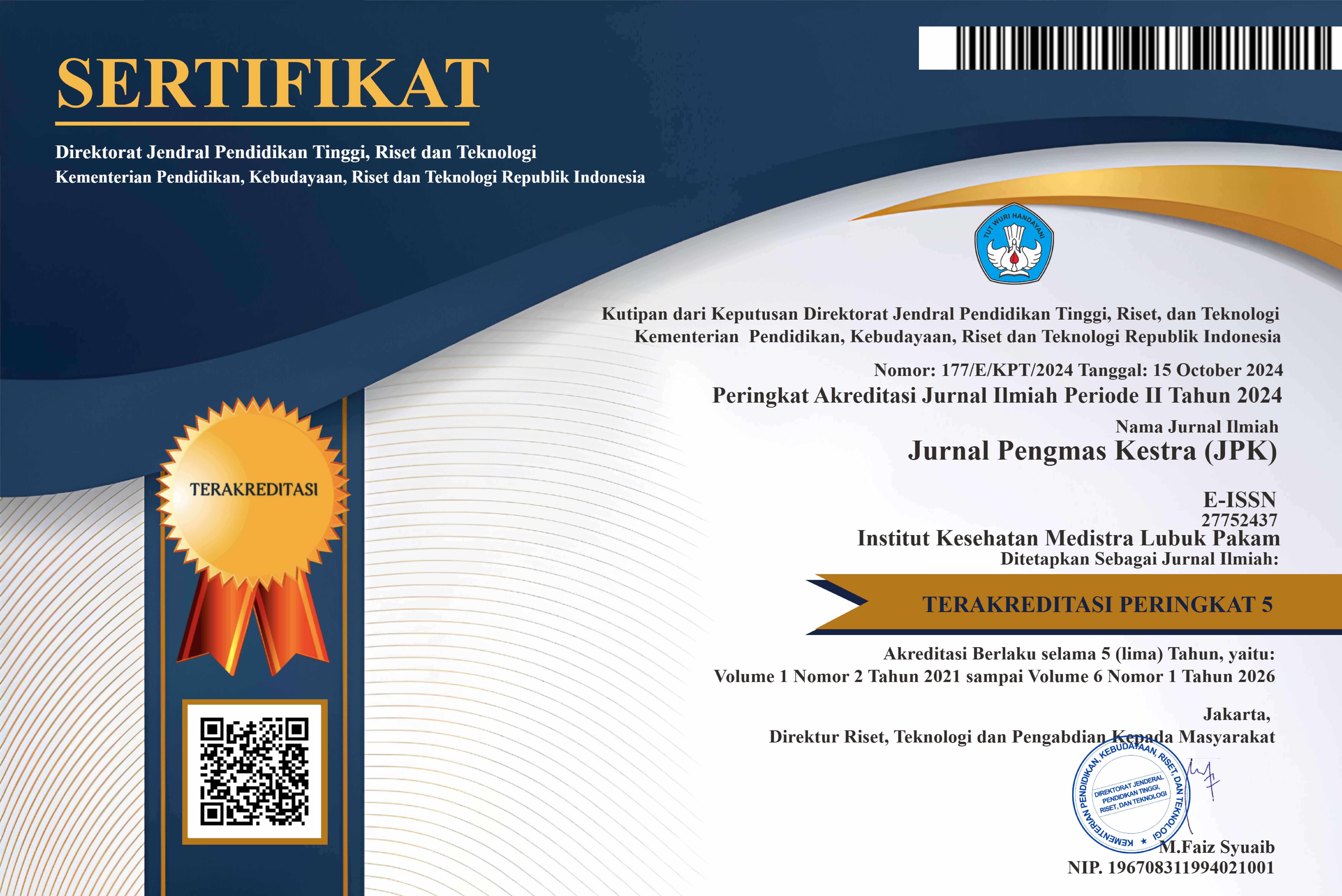Sharing Knowledge: Utilizing Cape Gooseberry Fruit to Reduce the Risk of Hypertension in Pregnant Women
DOI:
https://doi.org/10.35451/jpk.v3i2.1996Keywords:
Cape gooseberry, pregnancy hypertensionAbstract
One of the frequently encountered health issues, particularly among pregnant women, is hypertension. Hypertension during pregnancy poses a serious risk to the health of both the pregnant woman and the fetus. This issue requires special attention, especially in providing information to the public about alternative approaches to managing blood pressure. To address this problem, an educational campaign on the benefits of cape gooseberry for hypertensive pregnant women was conducted. Cape gooseberry, scientifically known as Physalis angulata, holds the potential in helping to reduce blood pressure in hypertensive individuals. Compounds found within the cape gooseberry, such as flavonoids and polyphenols, possess anti-hypertensive properties that could benefit health. Several studies indicate that cape gooseberry can lower blood pressure. The Community Engagement Activity (PKM) was held in Lau Rakit Village, STM. Hilir Sub-district, Deli Serdang Regency, on November 29th, 2023, involving 15 participants. The primary aim of this PKM is to enhance public knowledge, particularly among hypertensive pregnant women, regarding the benefits of cape gooseberry in reducing blood pressure and the appropriate methods of consumption. Additionally, this activity aims to raise awareness about the significance of nutrition in maintaining health during pregnancy. The educational campaign succeeded in increasing public knowledge about the benefits of cape gooseberry in reducing blood pressure. Positive responses were evident through active participation among the community in seeking further information regarding cape gooseberry and its consumption. It is anticipated that this educational campaign will serve as a foundation in the endeavor to manage community health, particularly concerning hypertension during pregnancy.
References
Br Ginting Munthe, N., & Sembiring, I. M. (2023). The Effect of Ciplukan Fruit Consumption on Hypertension in Pregnancy. JURNAL KEBIDANAN KESTRA (JKK), 6(1), 45–52. https://doi.org/10.35451/jkk.v6i1.1870
Garovic, V. D., Dechend, R., Easterling, T., Karumanchi, S. A., Baird, S. M. M., Magee, L. A., Rana, S., Vermunt, J. V., & August, P. (2022). Hypertension in Pregnancy: Diagnosis, Blood Pressure Goals, and Pharmacotherapy: A Scientific Statement From the American Heart Association. In Hypertension (Vol. 79, Issue 2, pp. E21–E41). Lippincott Williams and Wilkins. https://doi.org/10.1161/HYP.0000000000000208
Mayefis, D., Tiranda, J., Adhami, E., Valentine, F., & Kesehatan Mitra Bunda Batam, I. (2022). Pemberdayaan Masyarakat Dalam Pencegahan Dan Penanganan Preeklamsia Pada Ibu Hamil. Jurnal Pengabdian Masyarakat Akademisi, 1(2).
Nuranda, A., Saleh, C., Yusuf, B., Kimia, J., Matematika, F., Ilmu, D., & Alam, P. (2016). Potensi Tumbuhan Ciplukan (Physalis Angulata Linn.) Sebagai Antioksidan Alami Potential of Ciplukan Plant as Natural Antioxidants (Issue 1).
Putri Julianti, W., Ikrawan, Y., & Chandra Iwansyah, A. (2019). Effect Of Solvent On Total Phenolics Content, Antioxidant Activity And Toxicity Of Ciplukan Fruit (Physalis angulata L.).
Saleha, N., & Kemenkes Palangka Raya, P. (2023). Pemberdayaan Upaya Pencegahan Hipertensi Pada Ibu Hamil Di Wilayah Kota Palangka Raya. 5, 28–33.
Downloads
Published
Issue
Section
License
Copyright (c) 2023 Novita Br Ginting Munthe, Iskandar Markus Sembiring

This work is licensed under a Creative Commons Attribution 4.0 International License.
Copyright in each article is the property of the Author.




















